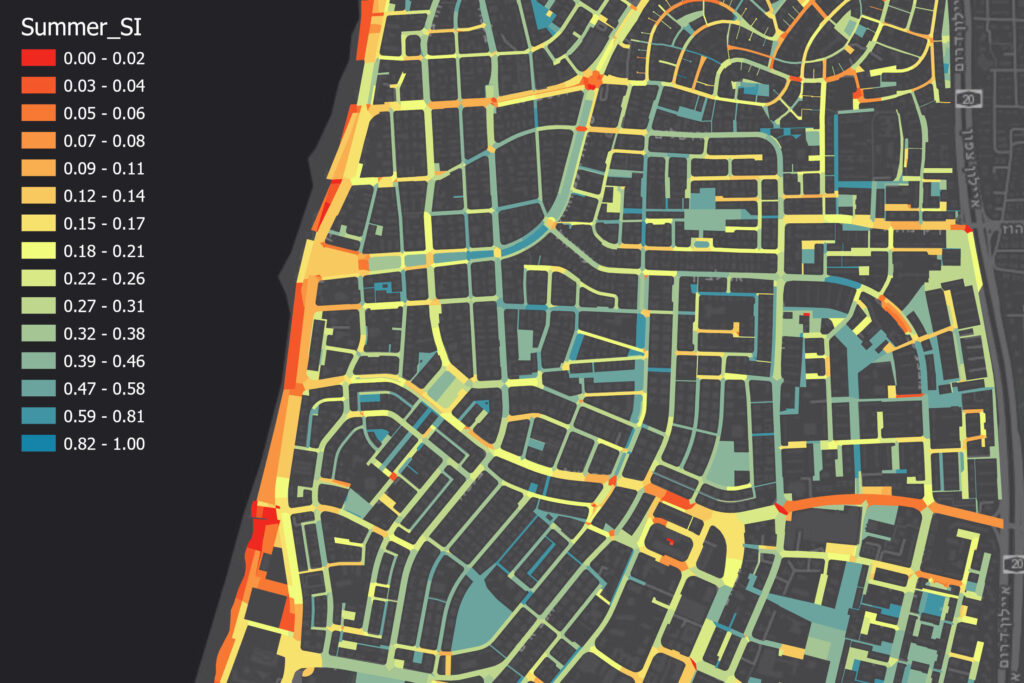
Since 2017, I have been working on the development and application of high-resolution urban shade mapping for assisting decision-makers in prioritizing urban actions. The concept of “shade maps” is simple: shade maps should visually inform users about street-level shade availability during summer, taking into account shade cast by buildings and trees. In places where summer heat stress is substantially exacerbated by exposure to solar radiation, shade maps effectively reveal high-resolution microclimatic weak spots, as well as significantly cool outdoor locations.
Shade maps can show the amount of shade for a certain time. Yet, for a better understanding of the cumulative effect of urban design on shade availability, shade maps use a daily Shade Index, which quantifies the proportion of solar radiation intercepted before reaching ground level during a typical summer day. The higher the Shade Index (between 0 and 1), the higher the shade provided by the design of an urban setting. Shade Index values can be calculated for any given area, though the shade maps I have produced focus on shade quantification in street segments and neighbourhoods.
Shade maps help understand the hierarchy of shade assets within a city and their allocation in different parts of the city. Combined with tree maps, they can also expose the dependence of outdoor shade on tree canopy cover and tree allocation, thus supporting planners with an evidence-based tool for allocating resources for improving shading conditions where they are most needed.
For more information on the way shade maps are calculated and used, click here.
A comprehensive set of shade maps and tree maps I developed for Tel Aviv-Yafo Municipality can be accessed here.
More information on our work on urban shade and tree mapping can be found in the following publications:
- Or Aleksandrowicz, Shachar Zur, Yonatan Lebendiger and Yoav Lerman, Shade maps for prioritizing municipal microclimatic action in hot climates: Learning from Tel Aviv-Yafo, Sustainable Cities and Society 53: 101931, 2020, DOI: 10.1016/j.scs.2019.101931.
- Or Aleksandrowicz, Mapping and management of urban shade assets: a novel approach for promoting climatic urban action, in Ansar Khan et al. (eds.), Global Urban Heat Island Mitigation, Elsevier, Amsterdam, 2022, pp. 1-27.
- Anna Shnaidman, Or Aleksandrowicz, Dariel Renn-Pony, Moshe Yaniv, Medad Hoze and Morel Weisthal, Geo data-based policymaking: National Tree Canopy Cover Example, FIG Working Week 2023, 28 May–1 June 2023.
- Or Aleksandrowicz and Ezra Ozery, A Parametric Tool for Outdoor Shade Design: Harnessing Quantitative Indices and Visual Feedback for Effective and Efficient Climatic Design of Streets, Proceedings of CAAD Futures 2023: Computer-Aided Architectural Design. INTERCONNECTIONS: Co-computing Beyond Boundaries, 2023.
